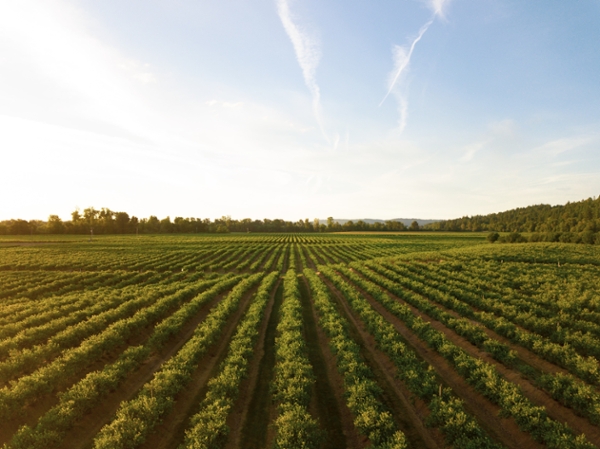
“I never dreamed we would get to this point that we’d have so much to lose—but I was wrong.” John Chester
This beautifully scripted and photographed film, available on Amazon, follows the experiences of a young couple for seven years as they sought to form a sustainable farm—a farm in harmony with nature. John and Molly Chester moved from their two-bedroom apartment in Santa Monica, California, to an old, abandoned avocado orchard on a two-hundred-acre arid stretch of land, one-hour north of LA. Everybody thought they were crazy, but they had a dream of growing food organically, a wide variety of crops, and raising animals, all sorts of animals, humanely. All the mono-cultural farms around them were industrial-scale cash crop ventures, but John and Molly were purpose-driven by a conviction that the health of our food is determined by how it is farmed.
Farming impresses me as a great analogy for pastors. Both endeavors are labor intensive, and I’d say working the soil is akin to working the soul. Farmers respect the balance of forces in the eco-system, and pastors respect God’s sovereign will and timing. Farmers participate in a delicate and patient dance with nature, and pastors live in the ebb and flow of the Spirit’s leading and power. Organic church growth in the household of faith has much more in common with the traditional family farm than it has with the highly programmed institutional church that services religious consumers. The best model for growing the church is not a mono-cultural-industrial farm. The church is aiming for the complexity of mature discipleship rather than the efficiency of a popular product.
John and Molly wanted to farm in harmony with nature. They wanted to farm without chemical fertilizers and pesticides. Their first challenge was dead, lifeless soil, devoid of microbial life. They had to rip out tons of brush and weeds and bring back the soil to life through irrigation, compost fertilizer, and cover crops. It was a long, slow process to infuse the soil with micro-organisms, but they wanted to get it right. Their mentor Alan York quipped, “There’s never enough time to do it right; always enough time to do it over.” Their overall objective was to emulate the natural eco-system by aiming for as much biodiversity as they could plant and raise. This meant planting a wide variety of fruit trees, cover crops, and vegetables, along with raising chickens, sheep, cows, ducks, pigs, bees, and livestock-guarding dogs—as Molly said, “Every animal you’d see in a children’s book.” Before they were done, they were growing two hundred different things. Eventually, as Alan explained, diversity leads to simplicity and harmony—a sustainable farm develops a self-perpetuating, self-regulating eco-system.
Bio-diversity farming is analogous to growing a gospel-centered household of faith. If we cultivate the rich diversity of the priesthood of all believers, the wide variety of the Spirit-gifts, and the social complexity of races, and if we build harmony out of the differences between women and men, young and old, educated and uneducated, rich and poor, we are on our way to experiencing the spiritual ecological reality of the kingdom of God in Christ. John said it well, “A simple way of farming is just not easy.” Likewise, a simple way of pastoring, is just not easy, because it is so dynamic and alive. Doing things the Jesus-way is simple, but it isn’t easy.
I was surprised by how much drama was in this 90-minute documentary. The idealism of the traditional farm ran smack dab into the destructive forces of nature. “Every step we take to improve our land,” Molly lamented, “just seems to create a perfect habitat for the next pest.” Their lush fruit trees attracted gophers that ate the roots and the beetles, snails, and swarms of starlings that ate the fruit. One year they lost 70% of their fruit crop. But “observation followed by creativity” meant facilitating and depending on natural predators, like coyotes and snakes to keep the gopher population in check. It meant building nests for owls to drive the starlings away and letting the ducks loose in the orchards to feast on snails. As the herds of cows and sheep grew so did the mounds of manure that attracted swarms of maggot-producing flies. Solution: let the chickens roam everywhere and eat the maggots. Coyotes evaded electric fences and devastated their chicken population multiple times until they found a guard dog brave enough to fend off the coyotes and smart enough not to eat the chickens.
Forming a traditional farm and growing a household of faith is never smooth sailing. It seems that for every two steps forward farmer and pastor alike take at least one step back. When John and Molly were starting out, Alan York promised that by the seventh year, farming would feel like surfing. And sure enough, in their seventh year, they felt like they had tapped into the power of nature. The soil was rich, and the aquifers were full. The interplay between crops and animals was flourishing and wildlife was returning to what was now a livable habitat. For John and Molly, the rhythm of farming had reached a sweet spot, a dynamic equilibrium, a kind of rest. It was still a lot of hard work, but “Apricot Lane Farms” had been transformed. Their “Biggest Little Farm” was productive, profitable, and beautiful. They were convinced that the old way of farming in harmony with nature was becoming the future of farming. I like the analogy between farming in harmony with nature and pastoring in harmony with the New Testament. Growing the household of faith organically means embracing the power of the gospel to make one new creation out of our complex spiritual, social, and cultural diversity—one new person in Christ. We need a biblical vision for a sustainable household of faith—a vision for “The Biggest Little Church.”
Dr. Doug Webster is professor of pastoral theology and Christian preaching at Beeson.
